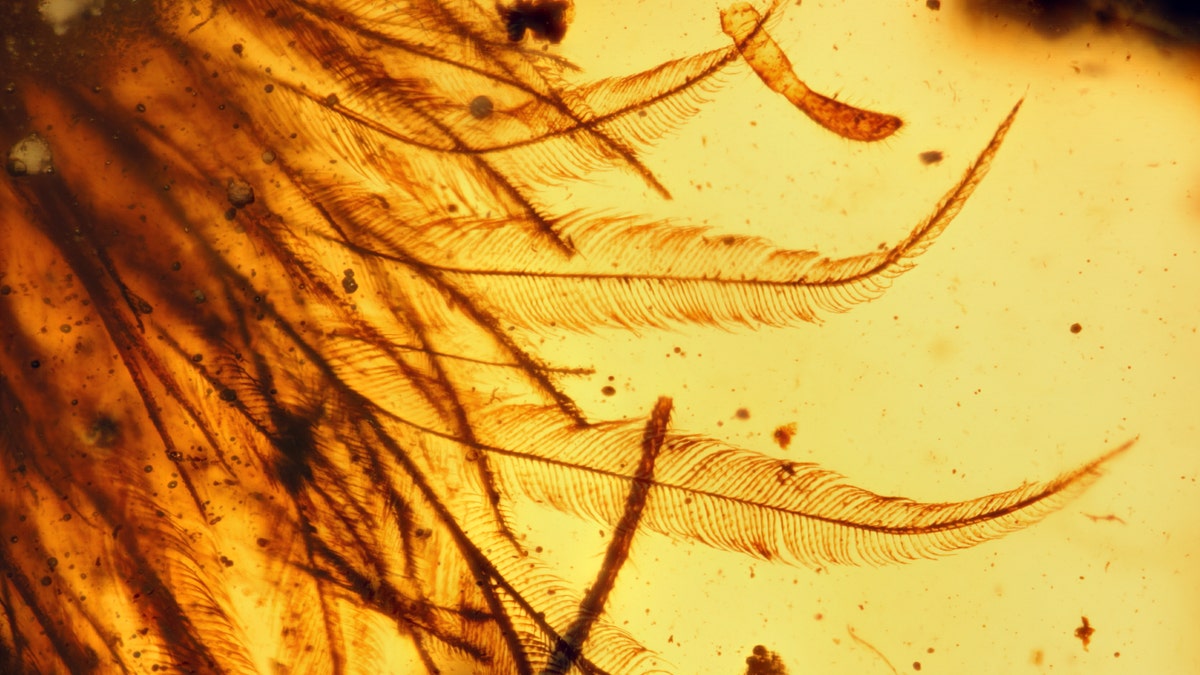Feathered dinosaur tail discovered in amber
Scientists reveal the first discovered feathered dinosaur tail in amber, believed to be 99 million-years-old
It’s a discovery that's straight out of “Jurassic Park.” Scientists have found a tiny section of a dinosaur’s tail trapped in amber, and not only that, it has feathers.
Dating to about 99 million years ago, or the mid-Cretaceous period, the amber containing the eight dinosaur vertebrae originally came from Myanmar. While scientists have known since 1996 that some non-avian dinosaurs had feathers, and even suspected that fact 10 years before that, this new find can teach them more about how feathers have evolved over millions of years. The feathered tail in question came from a juvenile dinosaur, likely a small coelurosaur.
"The new material preserves a tail consisting of eight vertebrae from a juvenile; these are surrounded by feathers that are preserved in 3D and with microscopic detail," Ryan McKellar of the Royal Saskatchewan Museum in Canada, said in a statement. He said the tail "was long and flexible, with keels of feathers running down each side." McKellar is a coauthor on a new study describing the discovery.
DINOSAUR-KILLING ASTEROID'S CRATER YIELDS NEW CLUES
The find shows the feathers’ barbs, and the microscopic barbules on them, in incredible detail; the feathers don’t have a well-defined central shaft, or rachis, a fact that tells scientists more about feather evolution. The top part of the tail was darker-- a chestnut brown-- than its underside. The amber even contains remains of soft tissues that have carbonized.
Ancient bugs, like a beetle and ants, can also be seen trapped in the amber.
Paul Olsen, a paleontologist and a professor in Earth and environmental sciences at Columbia University, described the specimen as “almost shocking in its detail.”

Microscopic barbules on tail feathers in the specimen. (Royal Saskatchewan Museum (RSM/ R.C. McKellar))
“This a remarkable find providing unprecedented detail for a previously poorly understood phase of feather evolution,” he told FoxNews.com in an email. “It is a wonderful complement to other non-avian dinosaur fossils, that while more complete than this tail fragment, can not provide the kind of extremely fine detail preserved in amber.”
The discovery is described in a new study in the journal Current Biology.
Follow Rob Verger on Twitter: @robverger





















